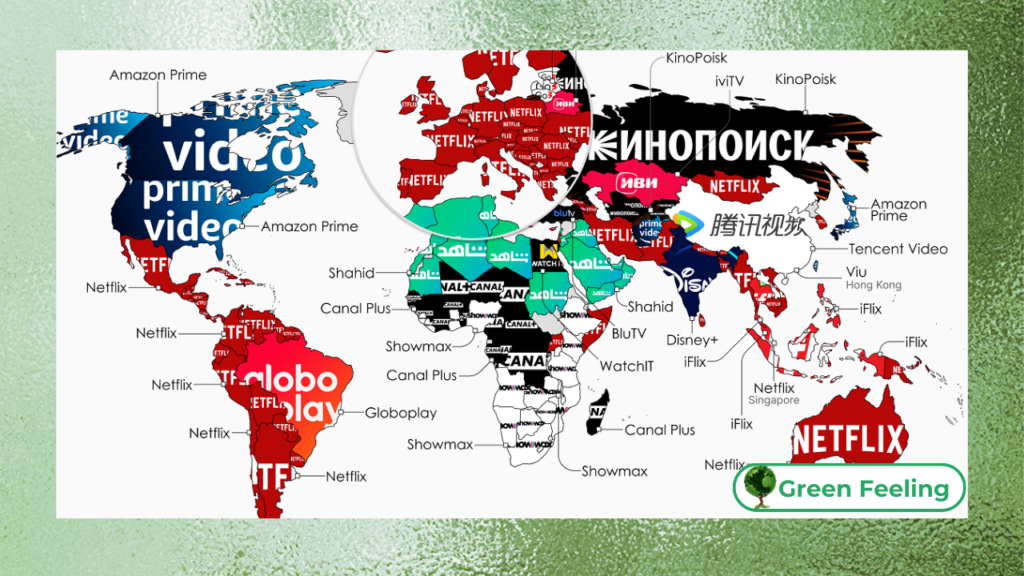The Environmental Impact of Streaming Services
The rise of streaming services has revolutionized the way we consume media, offering instant access to vast libraries of films, TV shows, and other content.

While this shift has brought convenience and accessibility, it also raises important questions about its environmental impact.
From the energy consumption of data centers to the carbon footprint of content delivery networks, the streaming industry has a significant ecological footprint.
This article explores the environmental implications of streaming services, examines current challenges, and highlights innovative solutions for a more sustainable future.
The Growth of Streaming Services and Their Energy Demand
Streaming services like Netflix, Amazon Prime Video, and Disney+ have become integral to modern entertainment, with millions of users worldwide accessing content daily.
However, this convenience comes at a cost. Streaming requires massive amounts of data to be transmitted and stored, relying on energy-intensive data centers and networks.
According to a 2021 report by The Shift Project, streaming accounts for approximately 1% of global carbon emissions, a figure that continues to grow as demand increases.
Data centers, which store and process the content, are particularly energy-hungry. They require constant cooling and power to operate, often relying on non-renewable energy sources. Additionally, the infrastructure that delivers content to users, such as fiber-optic cables and servers, also consumes significant energy.
“The environmental impact of streaming is often invisible to users, but it is a growing concern that requires immediate attention from both providers and consumers.” – Maxime Efoui-Hess, The Shift Project
The Carbon Footprint of Content Delivery Networks (CDNs)
Content Delivery Networks (CDNs) play a crucial role in streaming by ensuring that data reaches users quickly and efficiently. However, CDNs are energy-intensive, relying on servers distributed across the globe to reduce latency.
While this distribution improves performance, it also increases the carbon footprint of streaming, as data must travel long distances and pass through multiple nodes.
To mitigate this impact, some streaming platforms are investing in more efficient CDN technologies and partnering with renewable energy providers. For example, Google has committed to powering its data centers with 100% renewable energy, setting a precedent for other companies in the industry.
Strategies for Reducing CDN Emissions:
- Renewable Energy: Powering data centers and CDNs with solar, wind, or other renewable sources.
- Energy-Efficient Hardware: Using servers and networking equipment designed to minimize energy consumption.
- Localized Data Storage: Reducing the distance data must travel by storing content closer to users.
+ Movie Recommendations for Any Weekend
The Role of Video Compression and Quality
The environmental impact of streaming is also influenced by the quality of the content being delivered. High-definition (HD) and 4K streaming require significantly more data than standard-definition (SD) content, leading to higher energy consumption.
For example, streaming a 4K movie can use up to seven times more data than streaming the same movie in SD.
Video compression technologies, such as H.265 (HEVC), help reduce the amount of data required for streaming without compromising quality.
By adopting these technologies, streaming platforms can lower their energy consumption and carbon footprint. Additionally, some services are offering users the option to choose lower-quality streams, which can further reduce environmental impact.
+ The Environmental Impact Of Film Production
Innovations in Video Compression:
- Advanced Codecs: Technologies like H.265 and AV1 reduce data usage while maintaining high quality.
- Adaptive Streaming: Adjusts video quality based on the user’s internet speed, minimizing unnecessary data usage.
- User Choices: Allowing users to select lower resolutions to reduce energy consumption.
The Environmental Impact of Device Manufacturing
While streaming itself has a significant environmental footprint, the devices used to access streaming services also contribute to the problem.
The production of smartphones, tablets, smart TVs, and other devices requires substantial resources, including rare earth metals and energy. Additionally, the disposal of electronic waste (e-waste) poses a major environmental challenge.
To address this issue, some manufacturers are adopting sustainable practices, such as using recycled materials and designing devices for longer lifespans.
Consumers can also play a role by repairing and recycling their devices rather than replacing them frequently.
Sustainable Practices in Device Manufacturing:
- Recycled Materials: Using recycled metals and plastics in device production.
- Modular Design: Creating devices that are easier to repair and upgrade.
- E-Waste Recycling Programs: Encouraging consumers to recycle old devices responsibly.
The Broader Implications for the Entertainment Industry
The environmental impact of streaming extends beyond individual users and platforms to the entertainment industry as a whole.
Film production, for example, has its own carbon footprint, from the energy used on set to the transportation of cast and crew.
Streaming platforms can influence the industry by promoting sustainable practices and supporting eco-friendly productions.
Some streaming services are already taking steps in this direction.
For instance, Netflix has committed to achieving net-zero greenhouse gas emissions by the end of 2022, while Amazon Studios has implemented sustainable production guidelines for its original content.
+ Science Fiction Movies and Their Accurate Futuristic Predictions
Industry Initiatives for Sustainability:
- Net-Zero Commitments: Streaming platforms pledging to offset their carbon emissions.
- Sustainable Production Guidelines: Encouraging eco-friendly practices in film and TV production.
- Awareness Campaigns: Educating users about the environmental impact of streaming and how to reduce it.
Table: Environmental Impact of Streaming vs. Traditional Media
| Aspect | Streaming Services | Traditional Media |
| Energy Consumption | High (data centers, CDNs, devices) | Moderate (production, transportation) |
| Material Usage | Devices (smartphones, TVs) | Physical media (DVDs, Blu-rays) |
| Waste Generation | E-waste from devices | Plastic waste from DVDs and packaging |
Conclusion
The rise of streaming services has transformed the entertainment industry, offering unparalleled convenience and access to content.
However, this shift has also introduced significant environmental challenges, from the energy consumption of data centers to the carbon footprint of device manufacturing.
By adopting sustainable practices, such as renewable energy, efficient video compression, and responsible device production, the streaming industry can reduce its ecological impact and pave the way for a greener future.
As consumers, we also have a role to play by making conscious choices, such as opting for lower-quality streams and recycling old devices.
Together, streaming platforms, manufacturers, and users can work towards a more sustainable model of media consumption that balances convenience with environmental responsibility.
The future of streaming lies in embracing innovation and sustainability, ensuring that our entertainment choices do not come at the expense of the planet.
References:
EFOUI-HESS, Maxime. The Environmental Impact of Digital Technologies. The Shift Project, 2021. Available at: https://theshiftproject.org. Accessed on: October 10, 2023.
Additional Sources:
- Netflix Sustainability Report. Available at: https://about.netflix.com/en/sustainability. Accessed on: February 20, 2025.
- Amazon’s Commitment to Renewable Energy. Available at: https://sustainability.aboutamazon.com. Accessed on: February 20, 2025.






